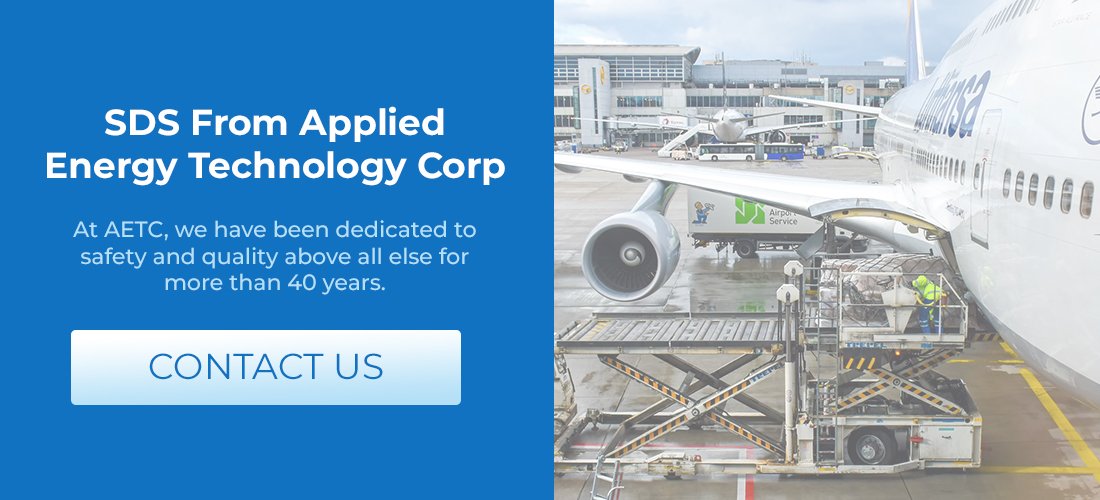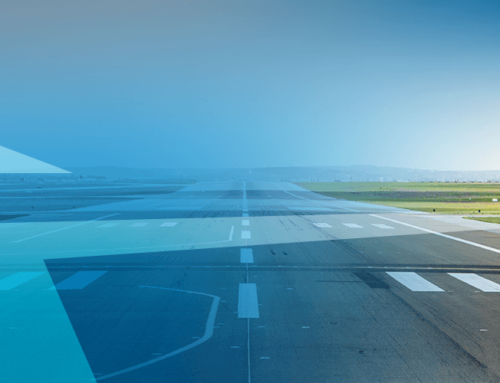Before chemicals or potentially hazardous materials can be shipped to another country by ground or air, they must be carefully classified, packaged, marked and labeled to meet international shipping standards. These classifications and labeling are performed in accordance with the United Nations Globally Harmonized System of Classification and Labelling of Chemicals (GHS) and are included in a product’s safety data sheet (SDS). Everything from aerosols and batteries to perfumes and alcoholic drinks may require a safety data sheet according to the Federal Aviation Administration (FAA).
At Applied Energy Technology Corp, our experienced and reliable team has more than 40 years of experience providing high-quality explosive and pyrotechnic components with the appropriate SDS for shipping. As a manufacturing company, AETC always goes out of its way to provide our customers with the highest standards of dependability and safety.
What Is a Safety Data Sheet and What Information Does It Provide?
An SDS is used to communicate information about potentially hazardous materials shipped by ground or air. Every SDS should show the chemical properties and potential hazards of the substances alongside recommendations for safe handling. According to the HCS, they must feature the product’s chemical properties, potential health hazards, protective measures and safety precautions. In case of an accident, an SDS must convey first aid information and knowledge on personal protection and exposure control.
All SDS must be in English regardless of origin, although they may include a second language, as well. An aviation safety data sheet (aviation SDS) must be included alongside hazardous chemical substances taken on an airplane. Even relatively safe products like household cleaners, spray lubricants and nail polish remover may require an SDS before being sold and shipped.
An SDS is typically split into 16 different sections. The first eight sections of an SDS include general information about the chemical and its hazards, safe handling practices and emergency control measures. The last eight sections contain technical, scientific information that teaches handlers about the stability and reactivity of a chemical and exposure control instructions.
The six most important sections of an SDS are as follows:
1. Substance Identification
The substance identification section gives a brief description of the product and its suggested and ill-advised uses. This section must include the current contact information of the product supplier and the national emergency contact for the product.
2. Hazard Identification
The hazard identification section includes information on a substance’s classification and their signal words, hazard statements and pictograms. If there are unclassified hazards in the product or it contains unknown toxicity, the shipper must identify the percentage of a mixture with unknown acute toxicity in detail. This information applies to the total percent of the mixture — not an individual ingredient.
3. Ingredient Composition
The third section includes all information on ingredient composition, stabilizing additives and impurities in the mixture. Regardless of your product’s trade secrets, you must reveal all ingredient compositions in this section. Ingredient percentages, health risks, CAS numbers, concentration limits and chemical names must all be detailed in the document.
4. First Aid Measures
The first aid measures section should detail the steps necessary in case of exposure to the chemical, including the first-aid instructions for every route of exposure, including skin and eye contact, inhalation and ingestion. The SDS must include indications for immediate or special medical attention and acute and delayed symptoms of exposure.
5. Firefighting Measures
This section outlines the recommendations for putting out a fire ignited by the chemicals in the product, including which extinguishing media should and shouldn’t be used, what protective equipment is required and what specific hazards develop from the chemical.
6. Accidental Release Measures
The sixth section outlines how to respond to leaks, releases and spills of the product to minimize exposure and contain the threat, including personal precautions, emergency procedures, containment methods and appropriate cleanup procedures.
Other Crucial SDS Sections
Alongside the six most important sections of an SDS, it is important to note the sections about handling and storage and physical and chemical properties.
Handling and Storage
The handling and storage section must include all precautions for safe handling of the chemical, including a list of incompatible chemicals and general hygiene practices. These specifications may include ventilation requirements and prohibition of smoking, eating or drinking near the chemical.
Physical and Chemical Properties
This section must outline the physical state, color, odor, pH, melting point and much more of a product for shipping. It is critical to include the following chemical properties of a product on an SDS:
- Decomposition temperature
- Evaporation rate
- Explosive limits
- Flammability
- Flash point
- Ignition temperature
- Melting point
- Partitition coefficient
- pH
- Solubility
- Vapor density
- Vapor pressure
- Viscosity
MSDS vs. SDS — What Is the Difference?
While all chemical compounds internally require an SDS to ship, a material safety data sheet (MSDS) is the national version of an SDS. Therefore, the information it contains is usually more streamlined and simplified than a regular SDS. While material safety data sheets are very useful nationally and may be easier to follow, an SDS must be used to ship chemical compounds internationally.
Another benefit of using an SDS is its standardized and universal formating. This feature lowers the burden for chemical product manufacturers and allows them to make only one SDS per product instead of multiple MSDS.
Who Uses an SDS?
Shippers and manufacturers are the sole individuals responsible for formulating and including an SDS in their packages. The shipper must first fill out an SDS to determine if the product is considered hazardous and identify the HAZMAT level of training required by regulations. As long as your product doesn’t require HAZMAT or UN-Specification packaging, an SDS should have all the hazard information necessary to send your package internationally.
What Kind of Products Require an SDS?
Most products that require SDSs are non-dimension materials such as gases, fluids and powders. While most finished products or components do not require an SDS, some materials and components may. Even common household products such as cleaning fluids, nail polish removers and spray lubricants may require an SDS before being shipped internationally. If a product is already safe or labeled with appropriate instructions, the product probably does not require an SDS. If you are unsure whether or not your product requires an SDS, you should include one in your package to be safe.
Most products have an SDS and keep it for display on the manufacturer’s website. After you have shipped an item with an SDS, you must keep the Shipper’s Declaration on file for at least two years.
SDS From Applied Energy Technology Corp
At AETC, we have been dedicated to safety and quality above all else for more than 40 years. We adhere to strict military specifications for each of our products and always include the SDS, so you are prepared no matter what. To learn more about our SDS and EX approvals, view our SDS information and contact us today.






